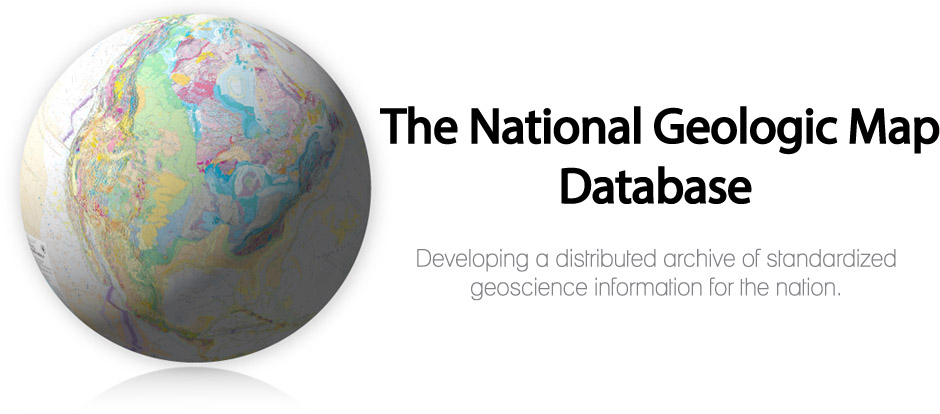Filters: Tags: Core Science Systems (X)
5 results (165ms)|
Filters
Date Range
Extensions Types Contacts
Categories Tag Types
|

The National Geologic Map Database (NGMDB) is a Congressionally mandated national archive of geoscience maps, reports, and stratigraphic information. The Geologic Mapping Act of 1992 and its Reauthorizations calls for the U.S. Geological Survey and the Association of American State Geologists (AASG) to cooperatively build this national archive, according to technical and scientific standards whose development is coordinated by the NGMDB. The NGMDB consists of a comprehensive set of publication citations, stratigraphic nomenclature, downloadable content in raster and vector formats, unpublished source information, and guidance on standards development. The NGMDB contains information on more than 110,000 maps and...
One of the grand challenges of Earth Surface Science and Natural Resource Management lies in the prediction of mass and energy transfer for large watersheds and landscapes. High resolution topography (lidar) datasets show potential to significantly advance our understanding of hydrologic and geomorphic processes controlling mass and energy transfer because they represent features at the appropriate fine scale on which surface processes operate. While lidar datasets have become readily available across the United States, challenges remain in extracting accurate and objective information relevant for hydrologic and geomorphic research, modeling, and prediction, as well as watershed management. We primarily focus our...
Categories: Data,
Project;
Types: Downloadable,
GeoTIFF,
Map Service,
Raster;
Tags: All Working Groups,
Completed,
Core Science Systems,
LIDAR,
Landscapes,
Advances in new technologies such as remote cameras, noninvasive genetics and bioacoustics provide massive quantities of electronic data. Much work has been done on automated (“machine learning”) methods of classification which produce “sample class designations” (e.g., identification of species or individuals) that are regarded as observed data in ecological models. However, these “data” are actually derived quantities (or synthetic data) and subject to various important sources of bias and error. If the derived quantities are used to make ecological determinations without consideration of these biases, those inferences which inform monitoring, conservation, and management will be flawed. We propose to develop...
Categories: Project;
Tags: Active,
All Working Groups,
Classification,
Core Science Systems,
Ecological Modelling,
Water management starts with the understanding of the spaciotemporal distribution of the available water, uses, and losses. A planet with limited water resources needs accurate, reliable and frequently-updated data and tools to assess and monitor historical and current uses and plan for future needs. Scientists at EROS harness massive amounts of satellite and global weather datasets and integrate them with agro-hydroloic models to create multi-scale products for use by resource managers and researchers across the world for improved decision making and scenario building in water, agriculture, and natural resources. Agro-hydrologic research focuses on hydrologic processes between 2-m below and 2-m above the ground...
Fluid circulation in the Earth’s crust plays an essential role in surface, near surface, and crustal dynamics. Near the surface, soil water and groundwater interact with each other and with rivers, lakes and wetlands, affecting weathering, soil formation, ecosystem evolution and biogeochemical cycles. Further down (1km), fluid flow affects diagenesis, hydrocarbon maturation and migration, ore deposits, faulting and earthquakes, and geothermal resources. The myriad flow pathways are driven by hydraulic gradients but controlled by the permeability of the crust material. To date, a large‐scale dataset of crustal permeability does not exist, inhibiting the understanding of large‐scale processes and the integration of...
Categories: Project;
Tags: All Working Groups,
Climate Models,
Completed,
Core Science Systems,
Crustal Process Models,
|

|